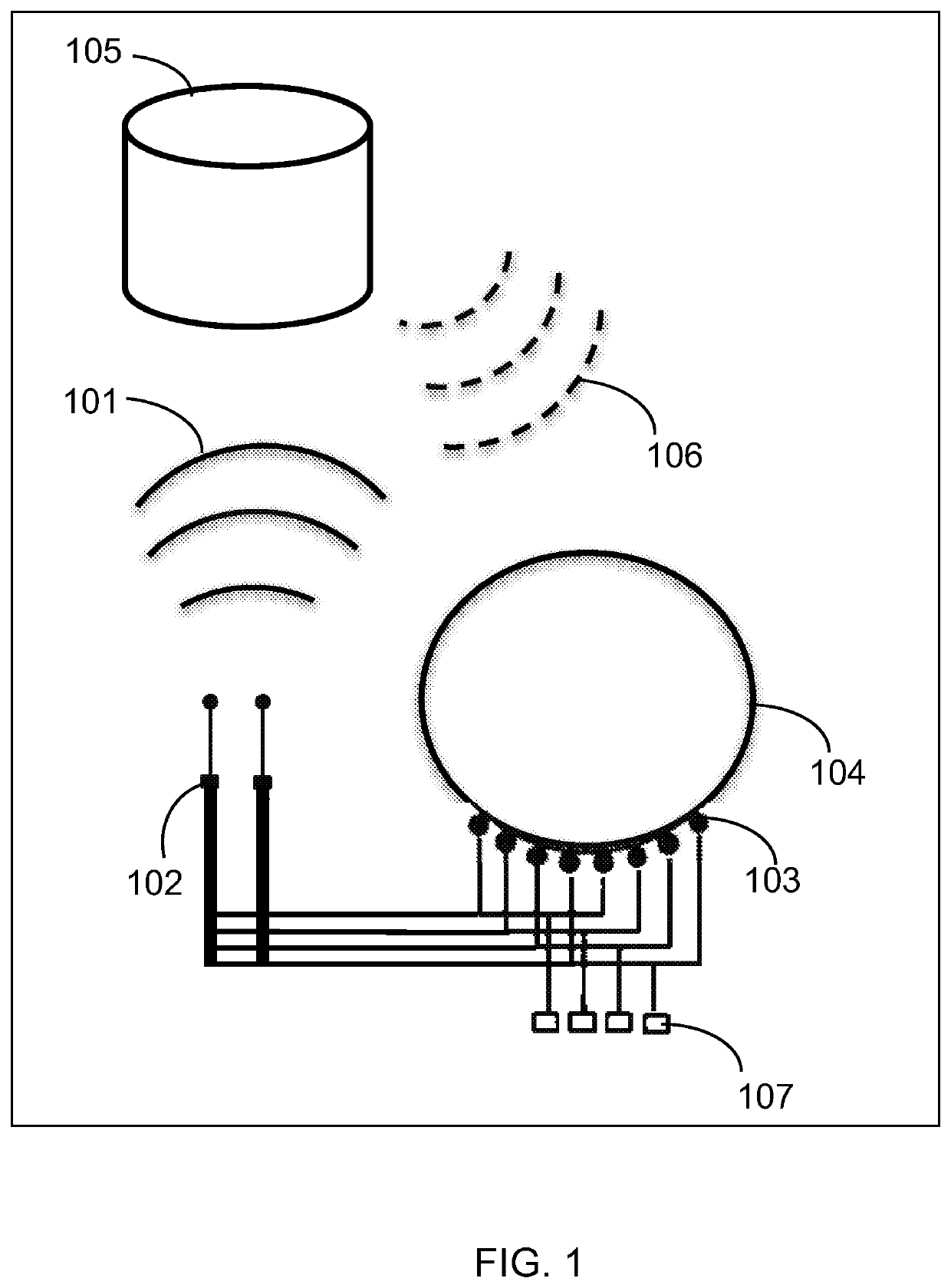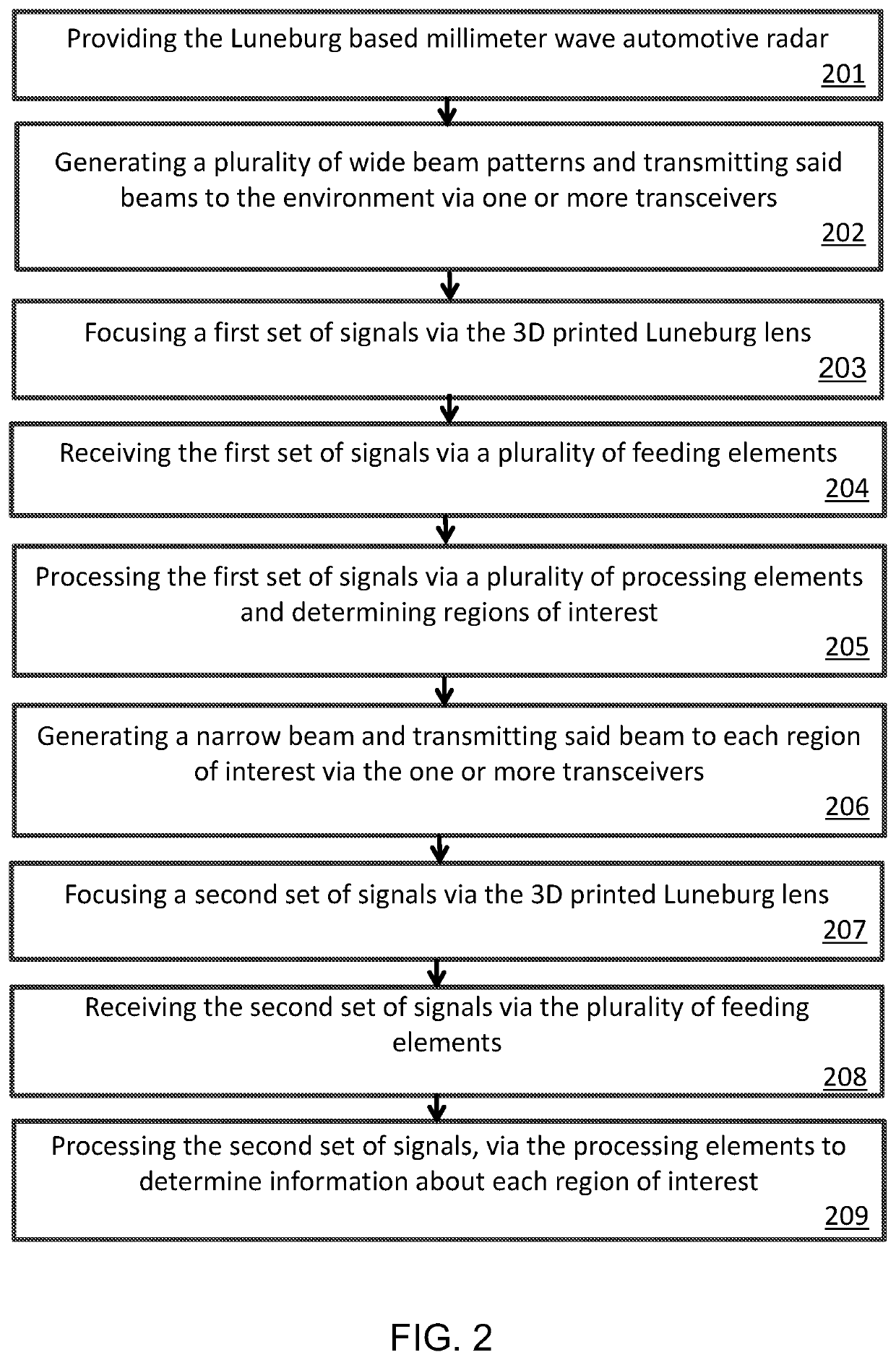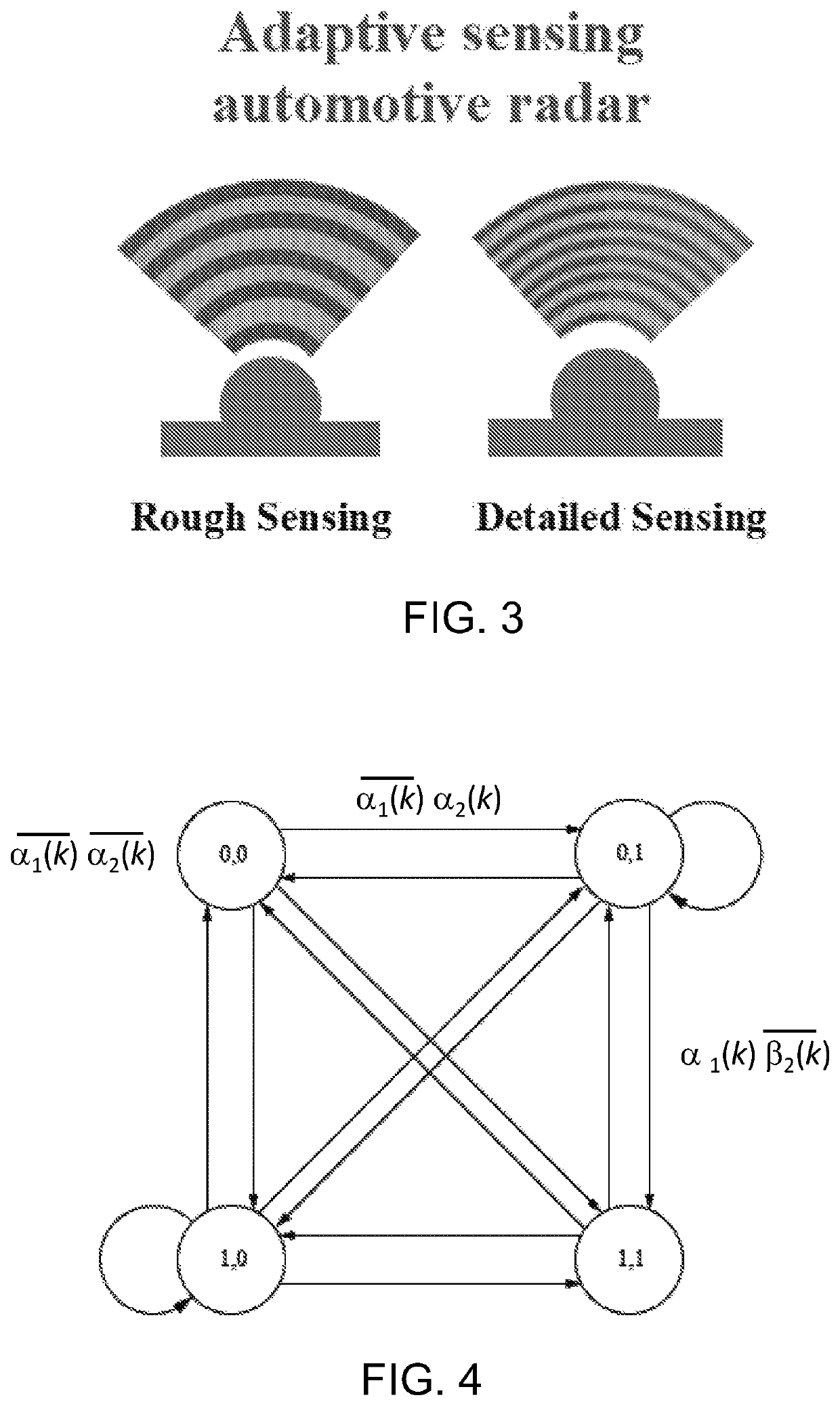Automotive radar using 3D printed luneburg lens
a technology of luneburg lens and automotive radar, which is applied in the direction of using reradiation, different interaction antenna combinations, instruments, etc., can solve the problems of inability to use luneburg lens only to build 2d lenses, inability to accurately predict the direction of autonomous driving in complicated scenarios, and high cost and adverse weather effects of conventional manufacturing methods, etc., to achieve the effect of improving the scanning resolution of radars, low cost and high gain
- Summary
- Abstract
- Description
- Claims
- Application Information
AI Technical Summary
Benefits of technology
Problems solved by technology
Method used
Image
Examples
Embodiment Construction
[0042]Referring now to FIGS. 1-12C, the present invention features an adaptive sensing method for scanning an environment, comprising a plurality of specific regions, surrounding an autonomous automobile. In some embodiments, the method comprises providing a millimeter wave automotive radar. In other embodiments, the millimeter wave automotive radar comprises: one or more millimeter wave transceivers, a 3D printed Luneburg lens having an upper frequency limit in a millimeter wave range, a plurality of antenna feed elements operatively coupled to the one or more millimeter wave transceivers, and one or more processing elements operatively coupled to the plurality of antenna feed elements and transceivers. In an alternative embodiment, the one or more millimeter wave transceivers are each separate transmitter and receiver devices. In an embodiment, the plurality of antenna feed elements are mounted to a surface of the 3D printed Luneburg lens and are each positioned in a determined di...
PUM
 Login to View More
Login to View More Abstract
Description
Claims
Application Information
 Login to View More
Login to View More - R&D
- Intellectual Property
- Life Sciences
- Materials
- Tech Scout
- Unparalleled Data Quality
- Higher Quality Content
- 60% Fewer Hallucinations
Browse by: Latest US Patents, China's latest patents, Technical Efficacy Thesaurus, Application Domain, Technology Topic, Popular Technical Reports.
© 2025 PatSnap. All rights reserved.Legal|Privacy policy|Modern Slavery Act Transparency Statement|Sitemap|About US| Contact US: help@patsnap.com



